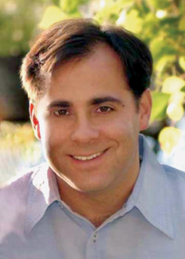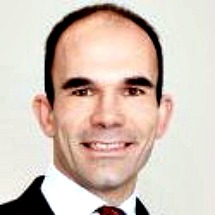High-frequency trading firms are under fire. They’ve been criticized in recent months by U.S. senators, financial bloggers and the press. The Securities and Exchange Commission has said it’s undertaking a review of these firms and their role in the market.

Now some of these firms, which previously shunned the spotlight, are fighting back. They’re explaining what they do and how they do it. And they’re explaining why they shouldn’t have such a bad rap, even if they represent more than two-thirds of the industry’s volume.
To be sure, that rap is bad. Richard Gorelick, co-founder and chief executive of RGM Advisors, a high-frequency trading firm based in Austin, Texas, offered up a definition of high-frequency trading based on media reports over the past few months. High-frequency trading firms, he said at a conference in New York last Wednesday, wield "an unfair, highly profitable and socially useless trading strategy implemented by highly secretive and unregulated traders using computers to compete with retail investors, manipulate markets and front-run flash orders, causing volatility in the financial markets and creating systemic risk."
That definition elicited hoots and a round of applause. The audience of nearly 200 people, including individuals from high-frequency trading firms, brokerage executives, traders and industry onlookers, were attendees at a half-day conference on high-frequency trading sponsored by financial-services research firm Aite Group.
After the wayward definition, Gorelick offered up his version of a fair description. High-frequency firms, he said, employ a "wide variety of highly competitive, low-margin trading strategies that are implemented by professional market intermediaries who have invested heavily in technology, that have the effect of making the markets more efficient by enhancing liquidity and transparent price discovery to the benefit of investors."
That definition, of course, might irk some market watchers. It could be seen as a self-serving description that highlights liquidity provision and price discovery, without acknowledging those strategies designed to uncover block orders or profit from informational disparities that exist in the structure of the market. Those are also legitimate and legal trading strategies, but they are not strategies primed to engender gratitude among buysiders. The definition also ignores those strategies that broker-dealers try to foil through painstaking execution strategies and anti-gaming efforts.
Still, the purpose of the panel was to explain the murky, opaque and secretive world of high-frequency trading firms. And the panelists did just that.
Matt Cushman, a managing director in quantitative strategies in the electronic trading group at Knight Equity Markets, described some of the characteristics of high-frequency trading firms. Typically, he said, high-frequency shops have a high portfolio turnover. Their trading strategies tend to be coupled with their execution strategies, and they micromanage the execution of orders. The firms are also usually very sensitive to latency in routing orders, receiving cancellations from market centers and getting market data from exchanges. For these firms, the order generation is done by algorithms.
Some firms, Cushman noted, rely on so-called black boxes, or computer systems that decide what to trade, when and how to trade it. A person would then monitor the trading that results. Some firms may require more human interaction in determining the strategies, but the "micromanagement of orders" is always done in an automated way, he said.
Knight Capital Group, a broker-dealer with a giant market-making operation, uses high-frequency trading strategies. Cushman noted that Knight Equity Markets takes in broker-dealer order flow, which it executes internally. Those markets are made by automated high-frequency algorithms. In addition, he said, the firm’s Knight Link product uses "similar algorithms to provide liquidity to outbound exhaust order flow that’s going to interact with exchanges." Knight Link is used mainly by brokers and dark pools.

RGM’s Gorelick said his firm, which does not make markets, spends a lot of time thinking about how it makes predictions about short-term price movements in the products it trades. He agreed with Cushman that one of the key biorhythms of high-frequency trading firms is high portfolio turnover. "We turn over our portfolio, which is a critical hallmark of high-frequency traders, many times every day," he said.
Arzhang Kamarei, a managing partner at Thesys Technologies, an incubator company for high-frequency traders, offered a taxonomy of high-frequency trading strategies. Broadly, he said, there are three groups of high-frequency strategies: market makers, trending (or predictive) strategies and arbitrageurs. Kamarei is also the chief operating officer of Tradeworx, a quantitative hedge fund, and editor of Inside the Black Box: The Simple Truth About Quantitative Trading. Thesys, based in New York, provides a trading platform and other services for its high-frequency customers.
Of the three groups of high-frequency trading firms, Kamarei said, market-making firms are the most latency-sensitive and have the most capacity-constrained strategies. Their strategies tend to have a high Sharpe ratio. In addition, they’re "more focused on single-ticker alphas as opposed to cross-sectional alphas," he said.
The second group consists of mean-reversion and trending strategies. These, Kamarei said, have lower Sharpe ratios and encounter fewer capacity constraints in the market. They also have a decreased focus on latency, and seek to generate more alpha from individual trades. The third group includes those firms engaged in short-term arbitrage of various types. These strategies may have holding periods that are hours or days, are less worried about latency and have a still higher need for alpha from individual trades, Kamarei said.
The panel discussion focused on market-making strategies more than the other two types. Kamarei noted that high-frequency market-making firms have been described pejoratively as engaging in "rebate-capture trading"–a reference to the credits that firms get for providing liquidity on most market centers. He said these firms are instead "free-market market makers, meaning that their profit margins are not determined by an exchange or by regulation."
Cameron Smith, general counsel at Quantlab Financial, the trading technology and software development company that’s a subsidiary of Houston-based Quantlab Group, noted that specialists on the New York Stock Exchange and market makers on Nasdaq previously had advantages that current high-frequency trading firms don’t have. "It used to be that liquidity providers had to have an advantage to actually provide liquidity," he said. Now, he said, "no one really has a time and place advantage anymore."
Smith added that in the 1990s there were fewer liquidity providers than there now are, and that spreads were wider. In contrast to that pre-decimalization era, he said, 50 to 100 firms–"all battling it out"–now provide liquidity and tighter spreads to retail and institutional traders.
In addition to explaining broadly how some high-frequency strategies work, the panelists discussed various regulatory issues that are currently on the table. And they agreed that when it comes to regulation, high-frequency firms have their share of worries. The biggest concern involves the prospect of changes around short selling, which the SEC is currently planning. In addition, several of the panelists said that a transaction tax, initially broached by a group of U.S. Congressmen last February, would compromise many high-frequency trading strategies. A minimum order exposure time of one second would also shut down some strategies by making it difficult for firms to manage their risk exposures.
Two areas high-frequency shops aren’t too worried about are flash orders and dark pools. Several panelists said high-frequency firms don’t interact much with flash orders and aren’t bothered that the SEC may eliminate them.
The firms also aren’t too concerned about the prospect of new regulations around dark pools. If anything, they said, they welcome rules that would push more orders into the public markets.
"We like public markets and [like] to be able to see data and model it, Quantlab’s Smith said. "With less price-forming order flow visible, it gets hard to model the market." Currently, 20 to 25 percent of the industry’s volume is done off-board (excluding ECN volume).
Kamarei of Thesys agreed with Smith. "It’s harder for a high-frequency trader to model [a market] where you don’t see quotes," he said. He added that it’s also harder to simulate trading strategies in dark pools because of the lack of data. As a result, high-frequency firms must currently find other ways to figure out how to trade profitably in dark pools, he said.




